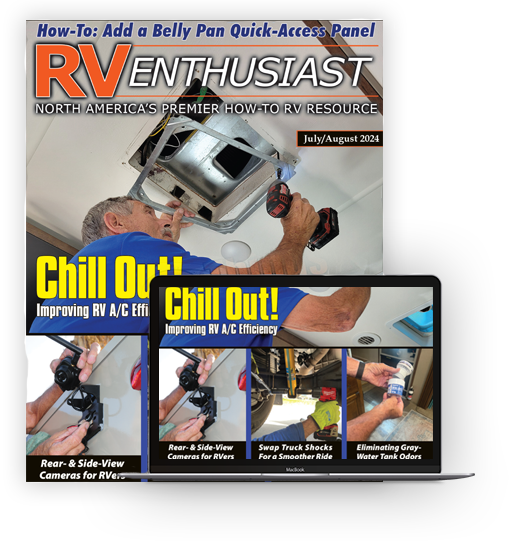Slip-Sliding Away
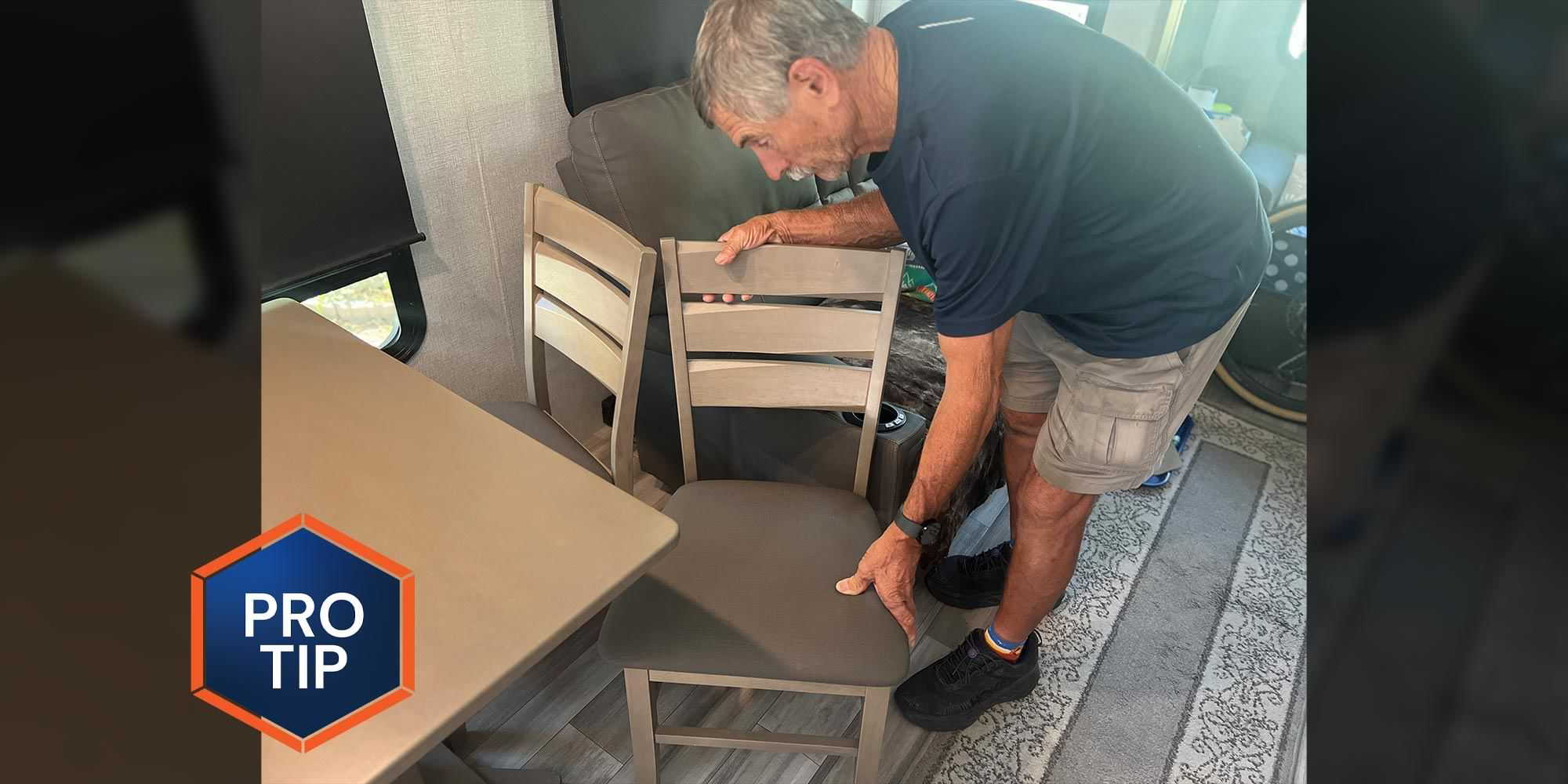
Free-standing dining tables and chairs offer a lot of versatility when it comes to dining and/or using the space in your RV as a mobile office. Seems like a no-brainer arrangement, since just about every stationary home has this type of configuration — but stationary homes don’t move. Chairs that merrily bounce around while your RV is plying the highway are subject to scrapes, cuts and general damage, and the adjacent structures also take some of the brunt.
In my fifth wheel, the chairs were “secured” for travel by two D-rings barely screwed into the floor and a couple of generic straps. The straps prevented the chairs from moving up and down, but the chairs still rubbed against the galley island and themselves. It didn’t take long for ugly wear marks to become obvious.
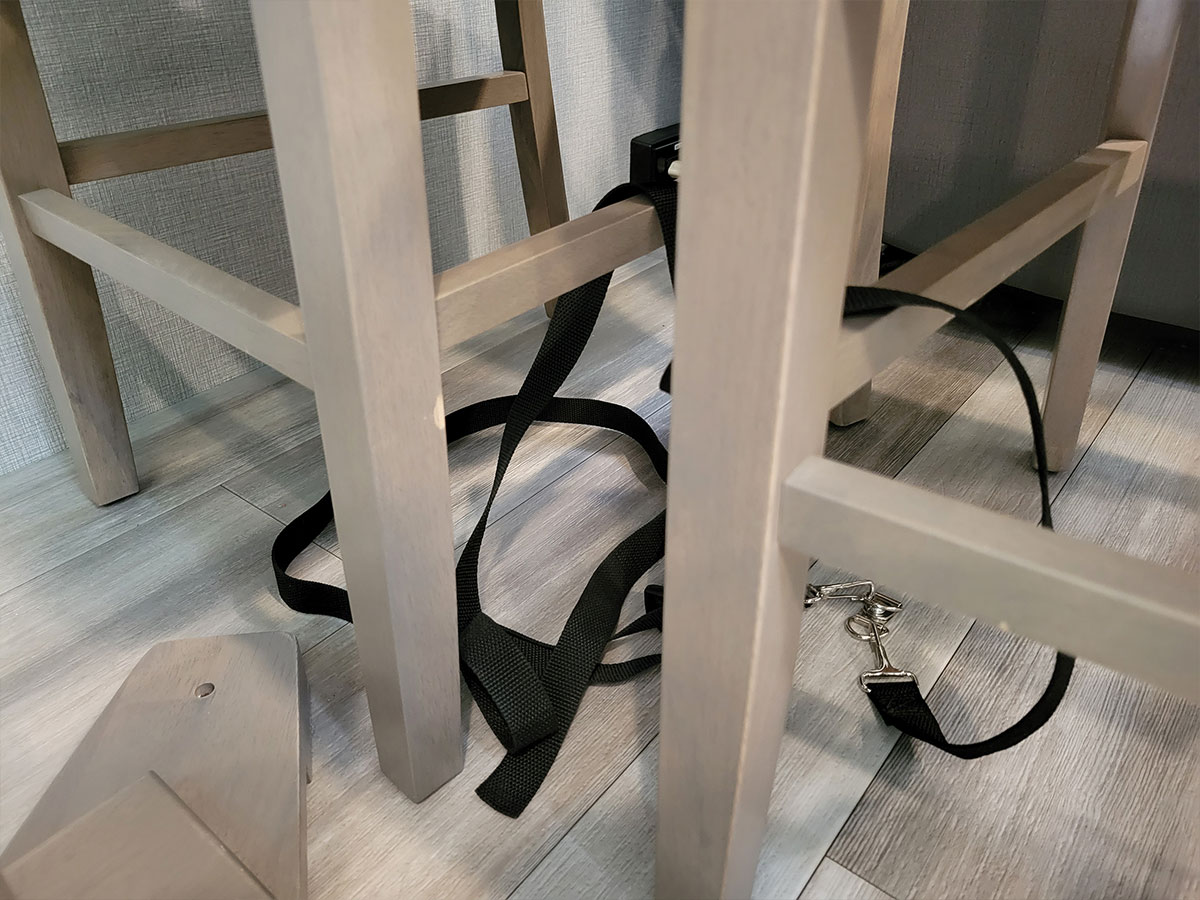
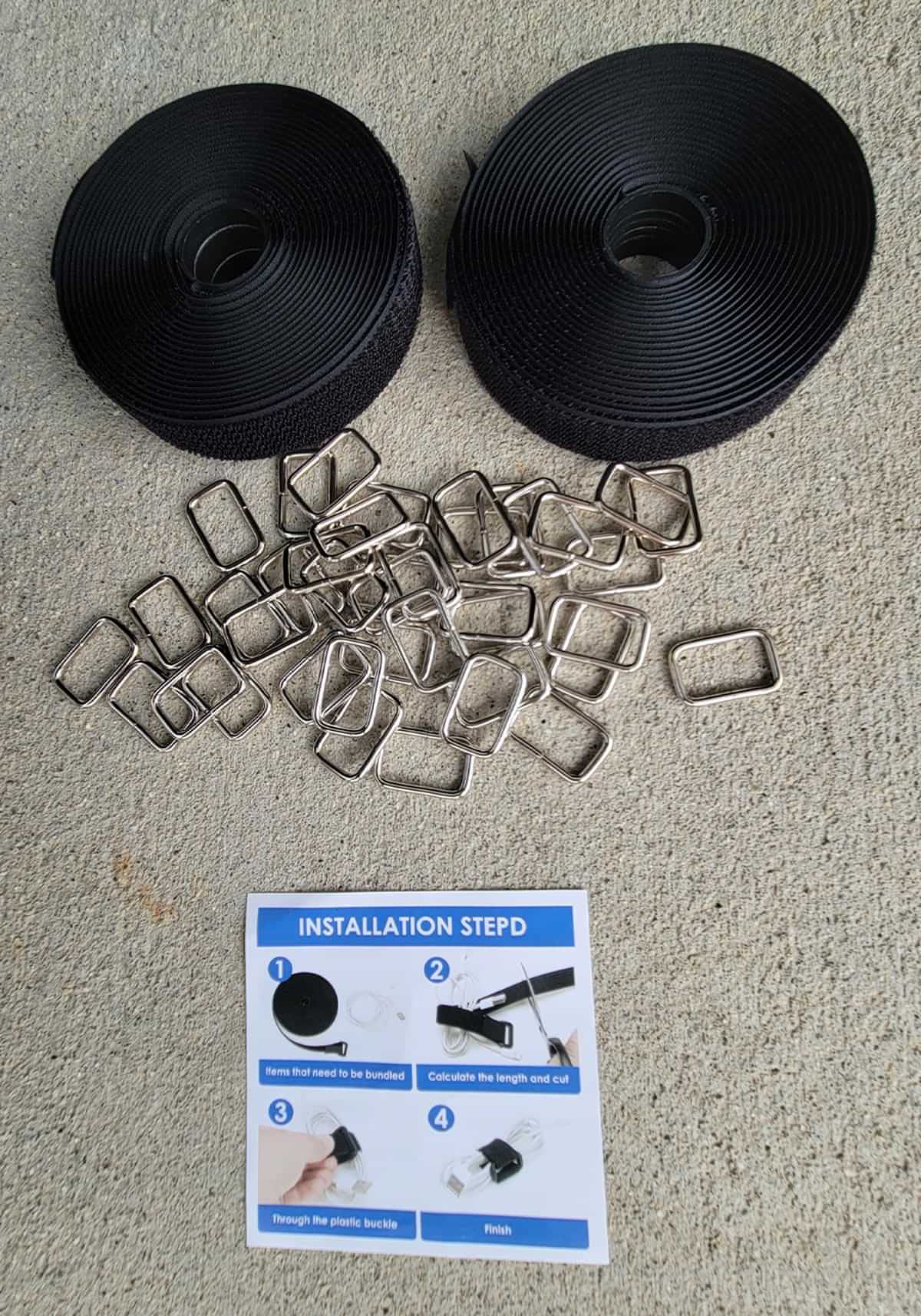
I even tried wedging a couple of pillows between the chairs, but they fell to the floor once the gap between the two chairs widened. A new method was sorely needed — one that was not going to take a long time to set-up before and after every trip. The solution developed in my mind after discovering 1-inch nylon hook-and-loop strapping material and metal rings to allow the straps to reverse back and “stick” to themselves. I purchased “Jumpso 2 Rolls 32.2 Ft. Straps 1-Inch Wide With 40 Metal Buckles” on Amazon for $9.95 — which gave me plenty of material to make custom-length straps.
I really wasn’t sure what I was going to do with the straps at first, but the purchase would not go to waste; these straps could be cut to control water hoses, electric cords, extension cords — even my yoga mat. After some pondering (read, empty stares at the chairs looking for solutions), I decided to mount a bracket on the wall at the same level as one of the chair’s leg cross members (centered). The stainless-steel bracket is called a Footman Loop and is commonly used for bimini tops (boats) and even for battery hold-down straps. It’s also available on Amazon ($7.59, “DGHAOP Footman Loop 2 Pcs 70mm”).

I really wasn’t sure what I was going to do with the straps at first, but the purchase would not go to waste; these straps could be cut to control water hoses, electric cords, extension cords — even my yoga mat. After some pondering (read, empty stares at the chairs looking for solutions), I decided to mount a bracket on the wall at the same level as one of the chair’s leg cross members (centered). The stainless-steel bracket is called a Footman Loop and is commonly used for bimini tops (boats) and even for battery hold-down straps. It’s also available on Amazon ($7.59, “DGHAOP Footman Loop 2 Pcs 70mm”).
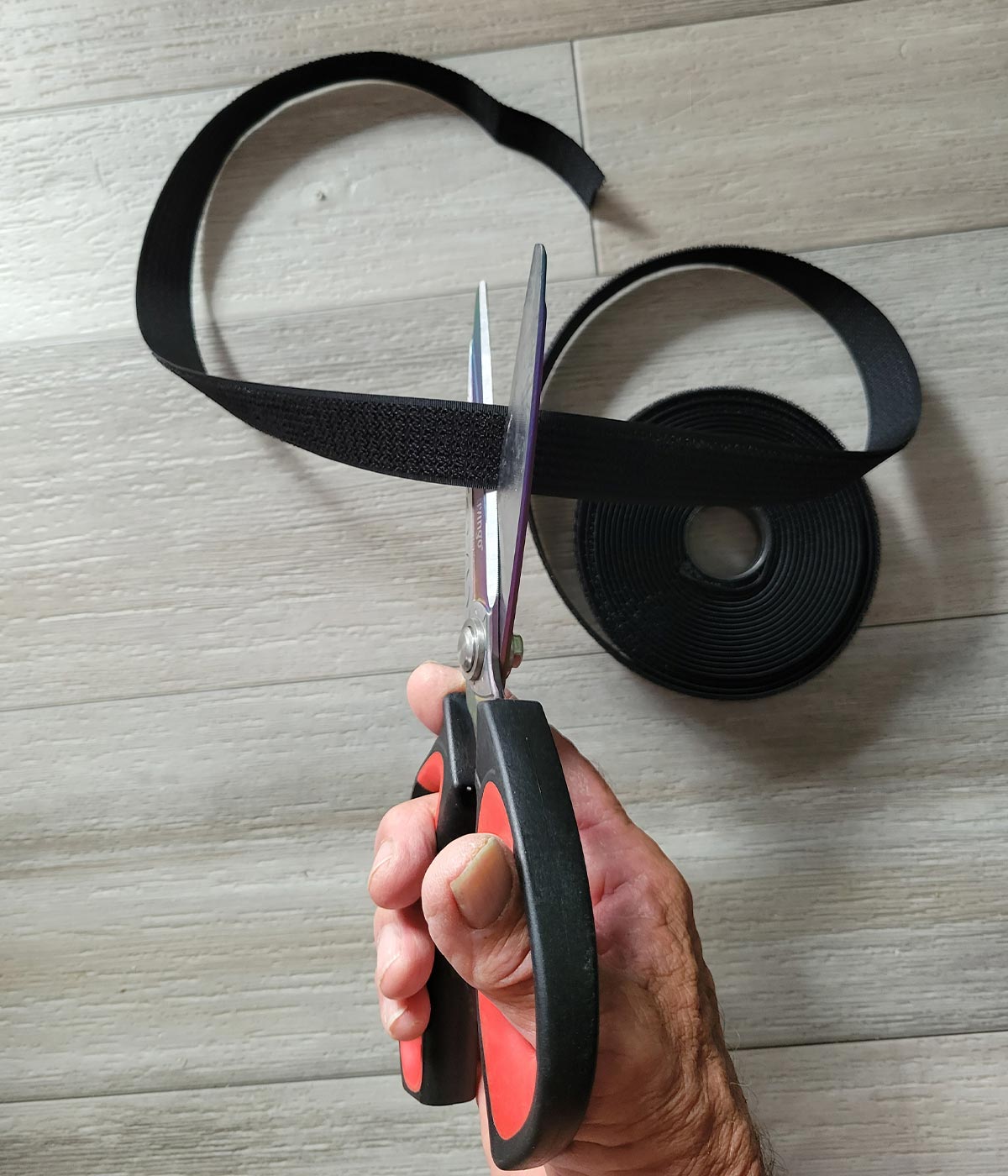
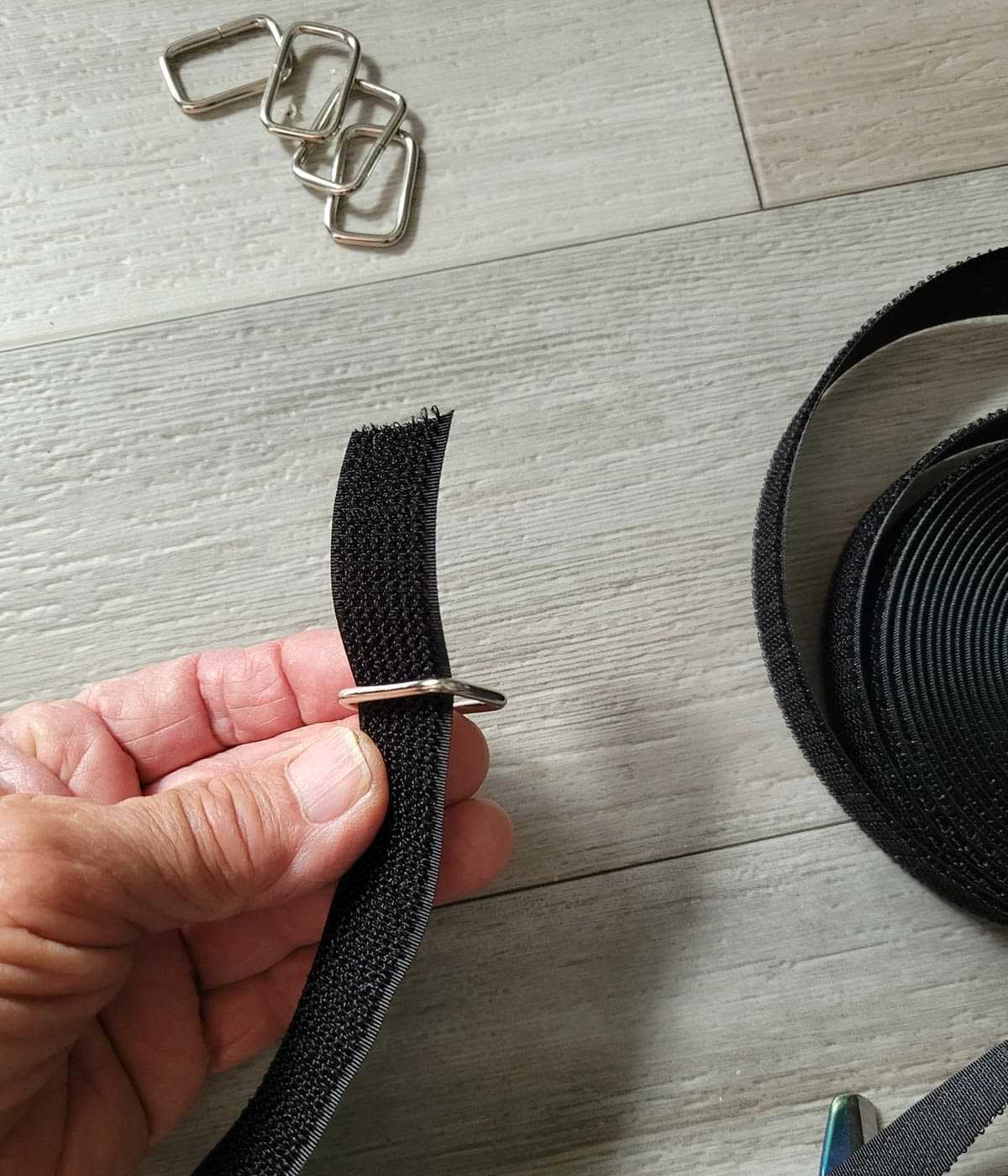
Straps can be cut to any size with scissors. Allow for additional strap length for looping back through the buckles when measuring for any project. You get 40 buckles, so don’t worry about running out.
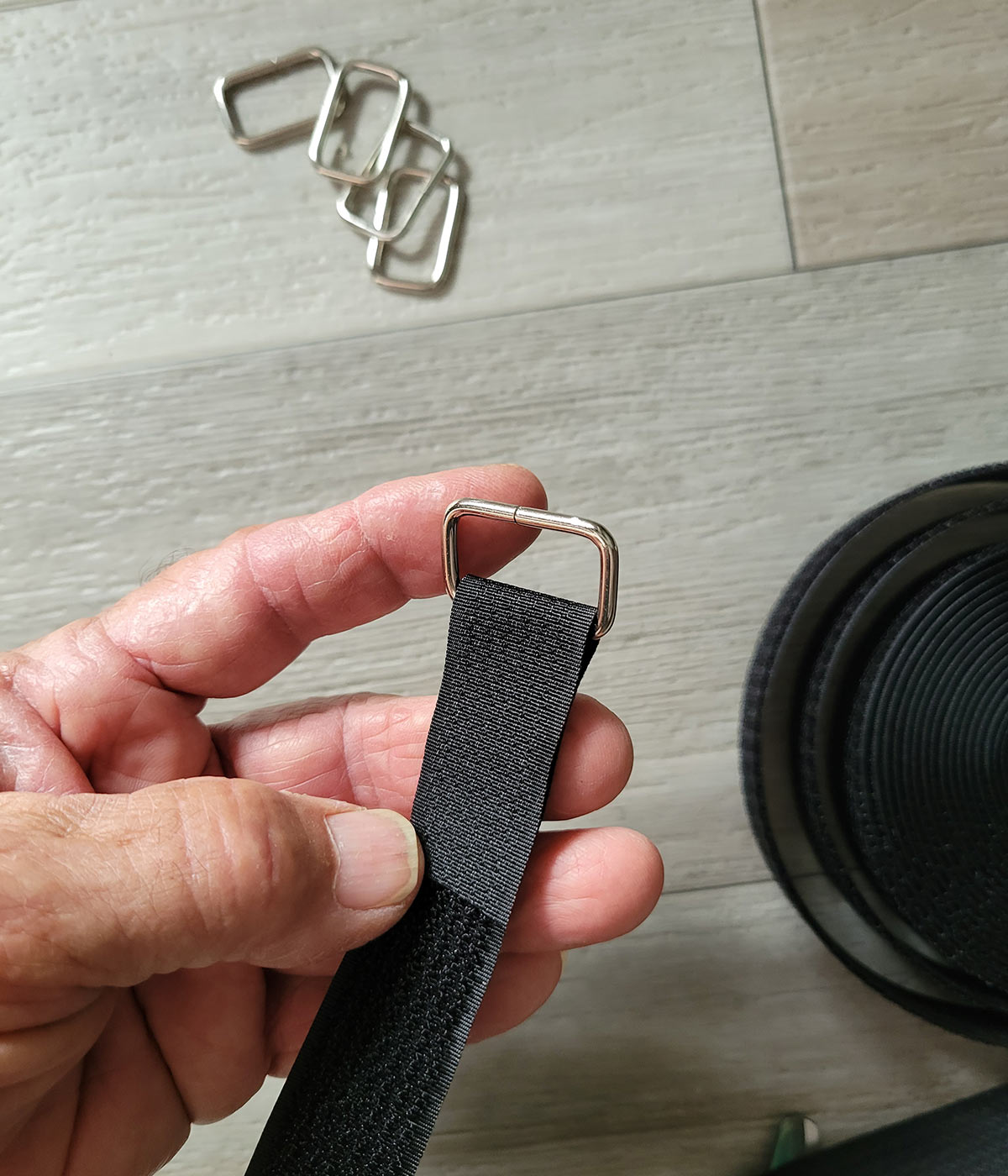
It’s only necessary to allow 3 or 4 inches of strap to make a strong connection to the buckle. If you need more holding power, just make the overlap section longer.
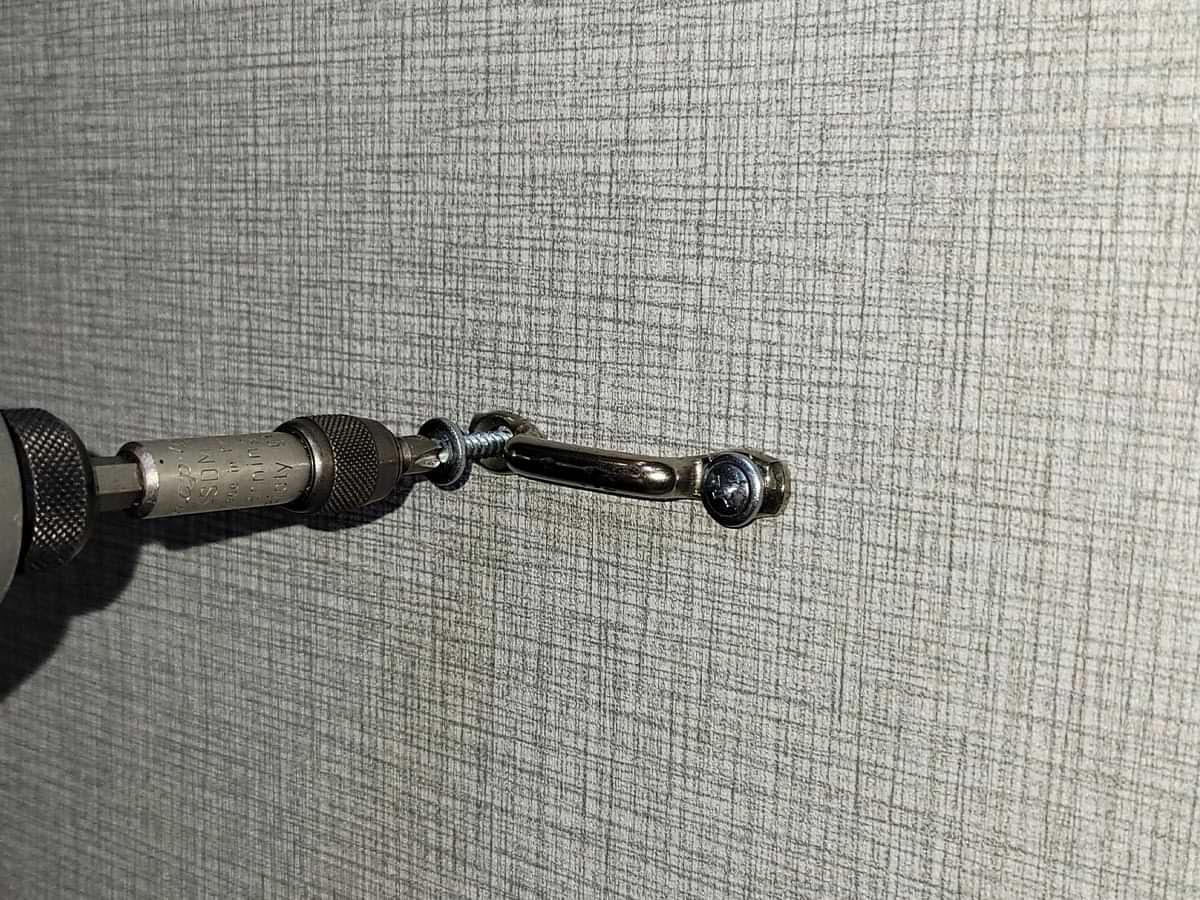
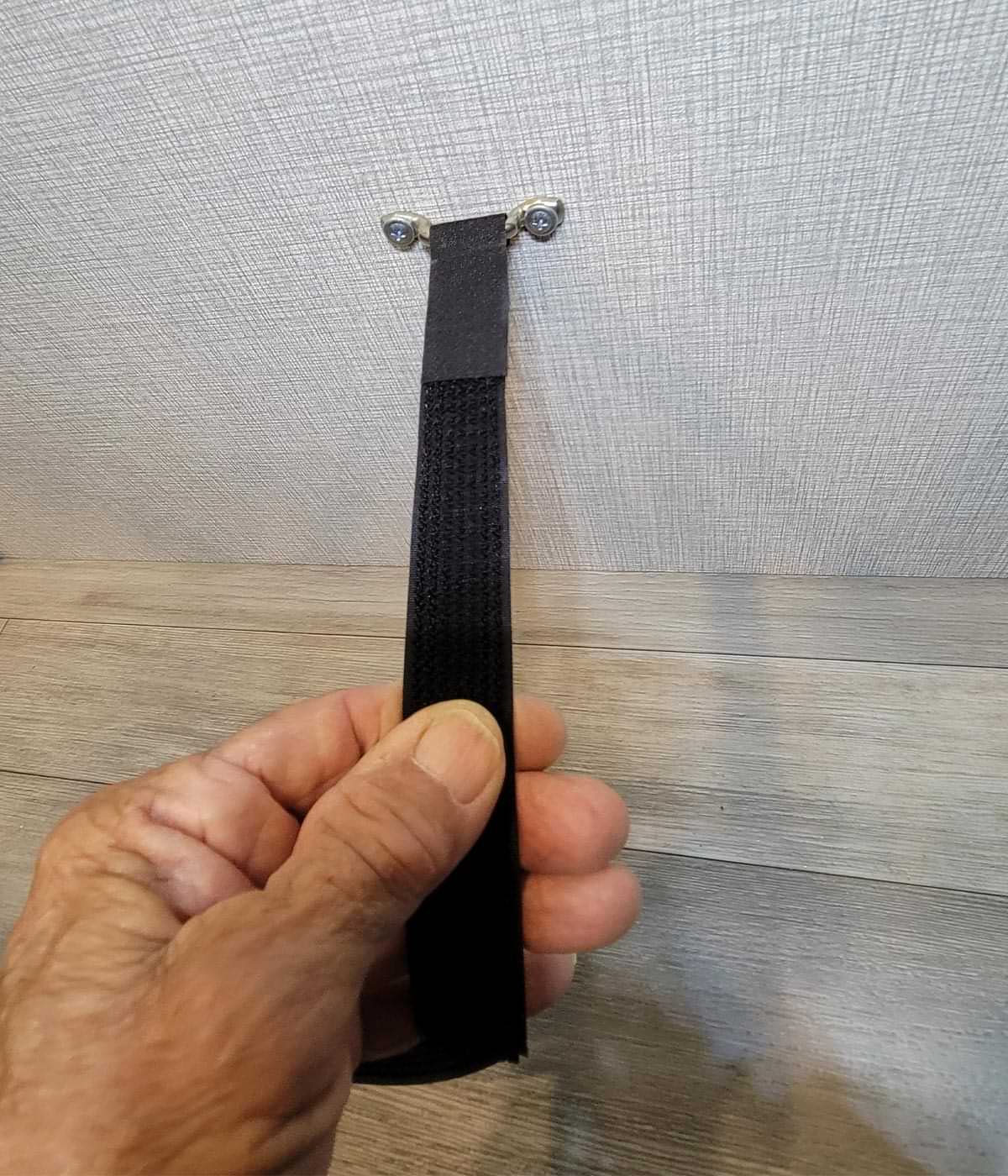
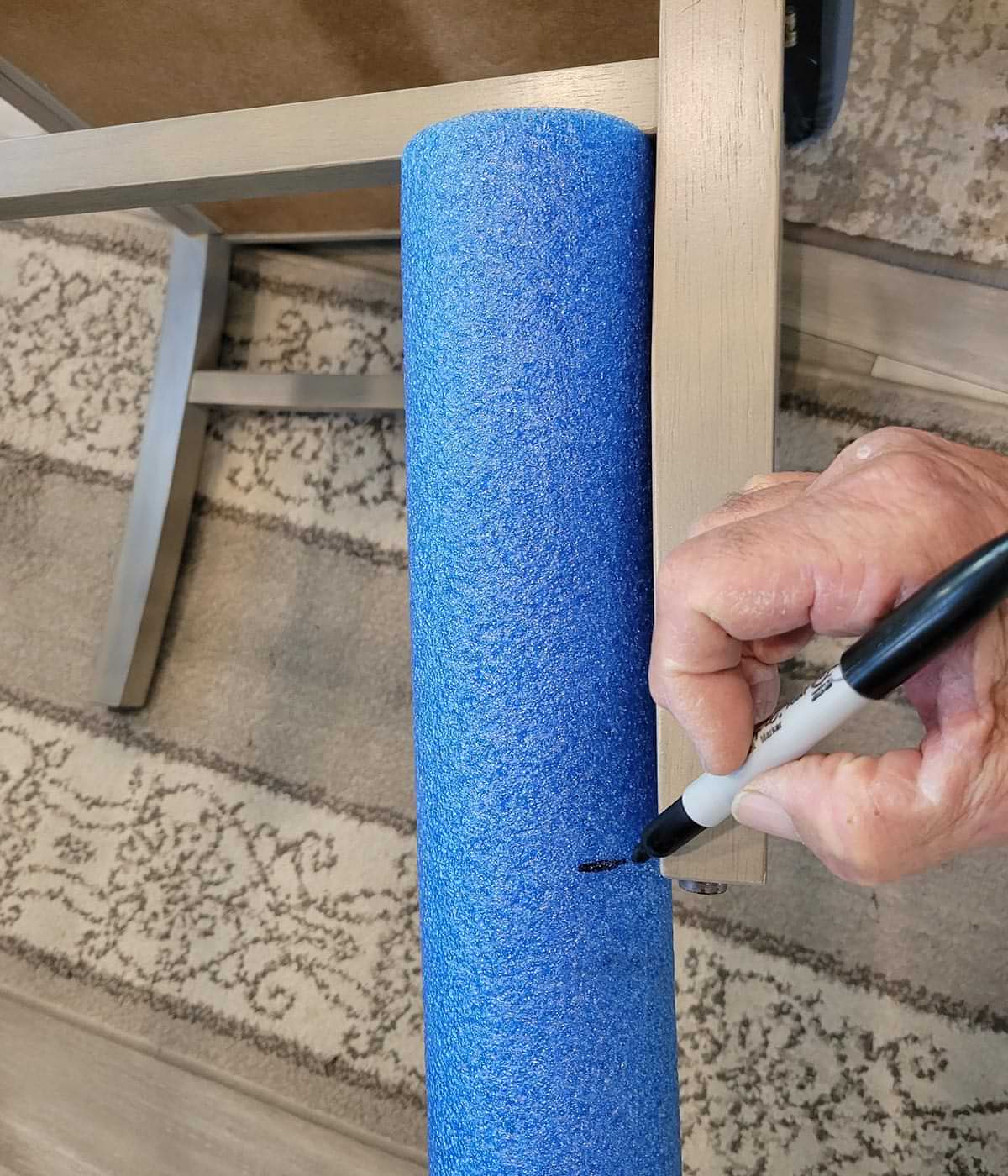
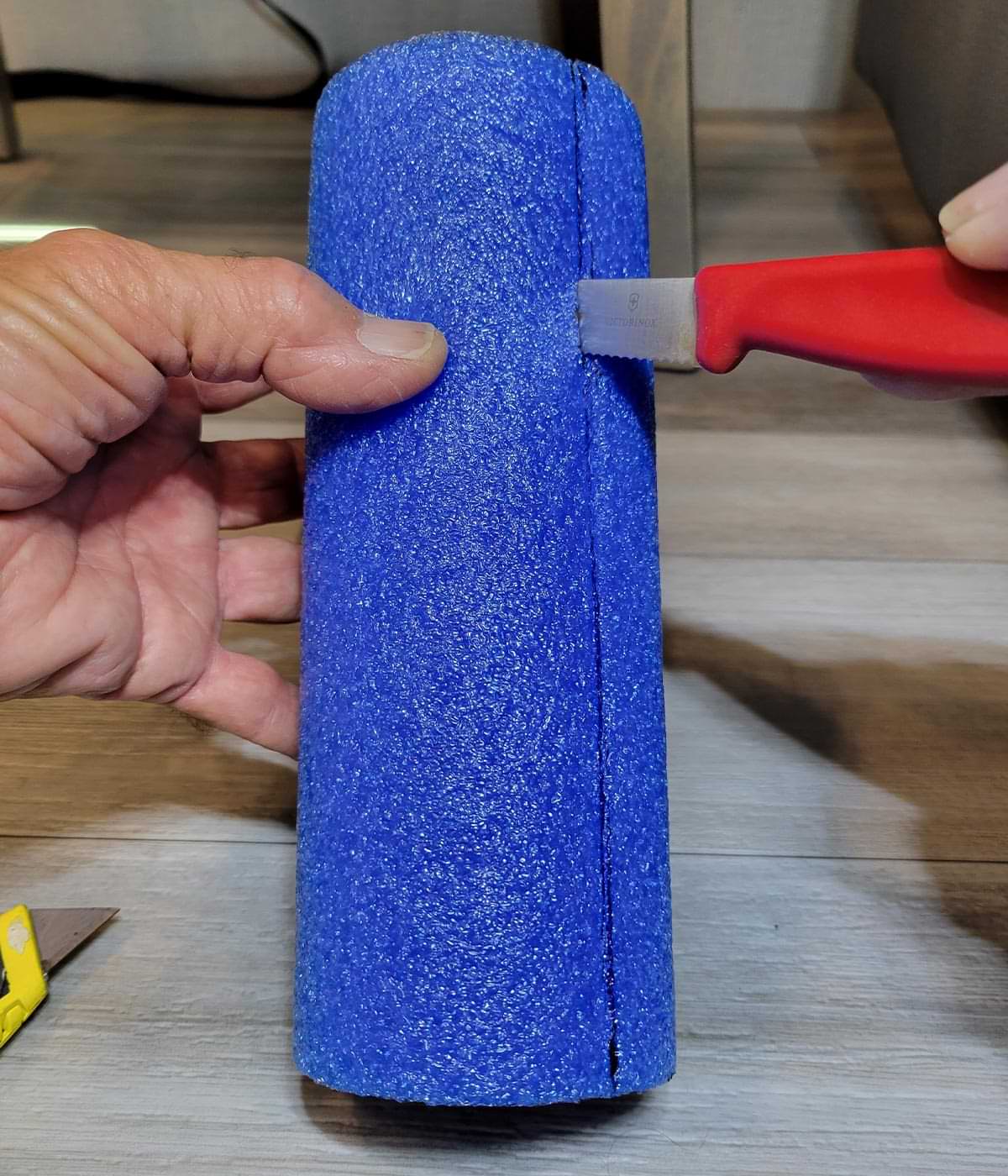
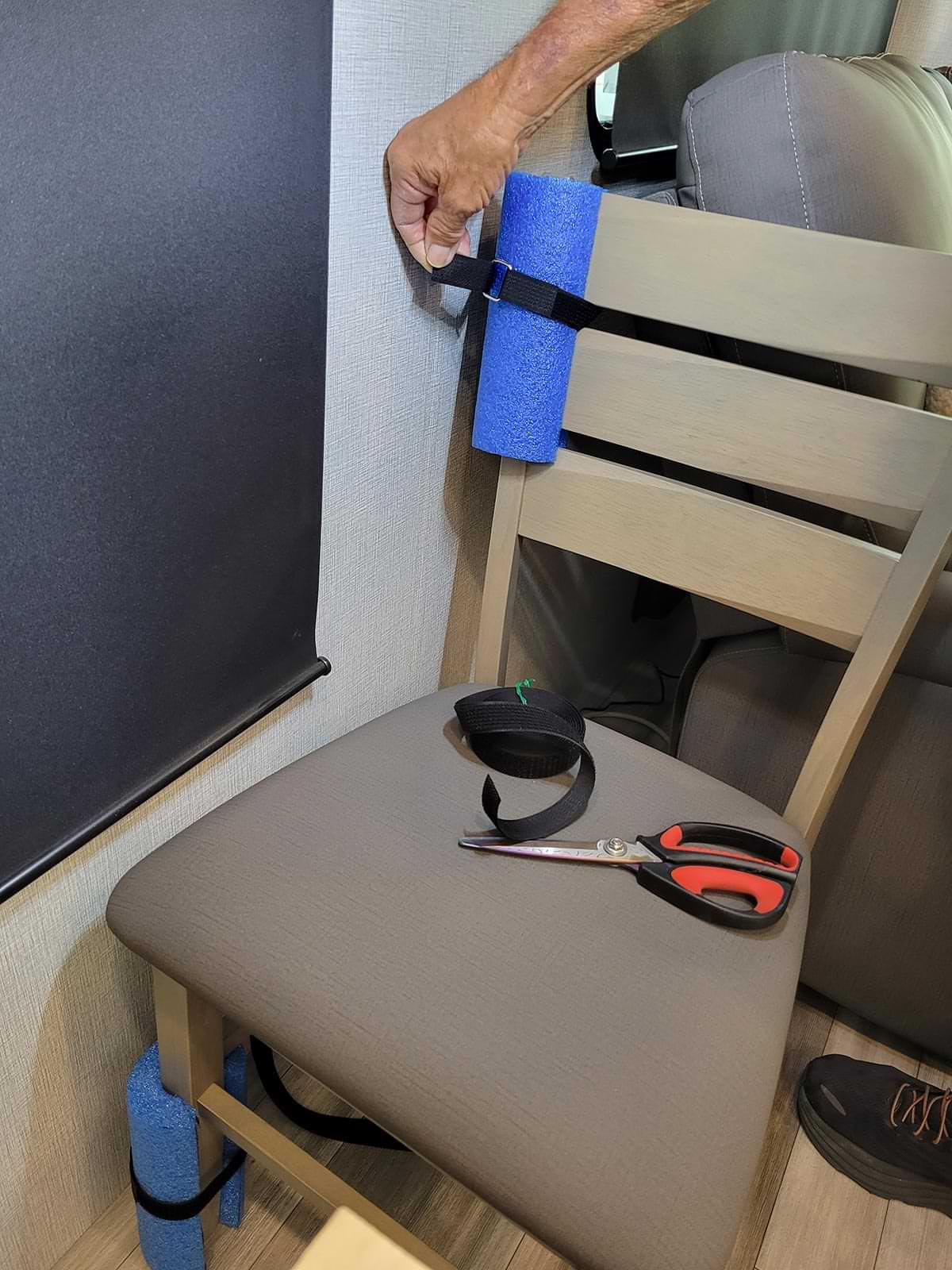
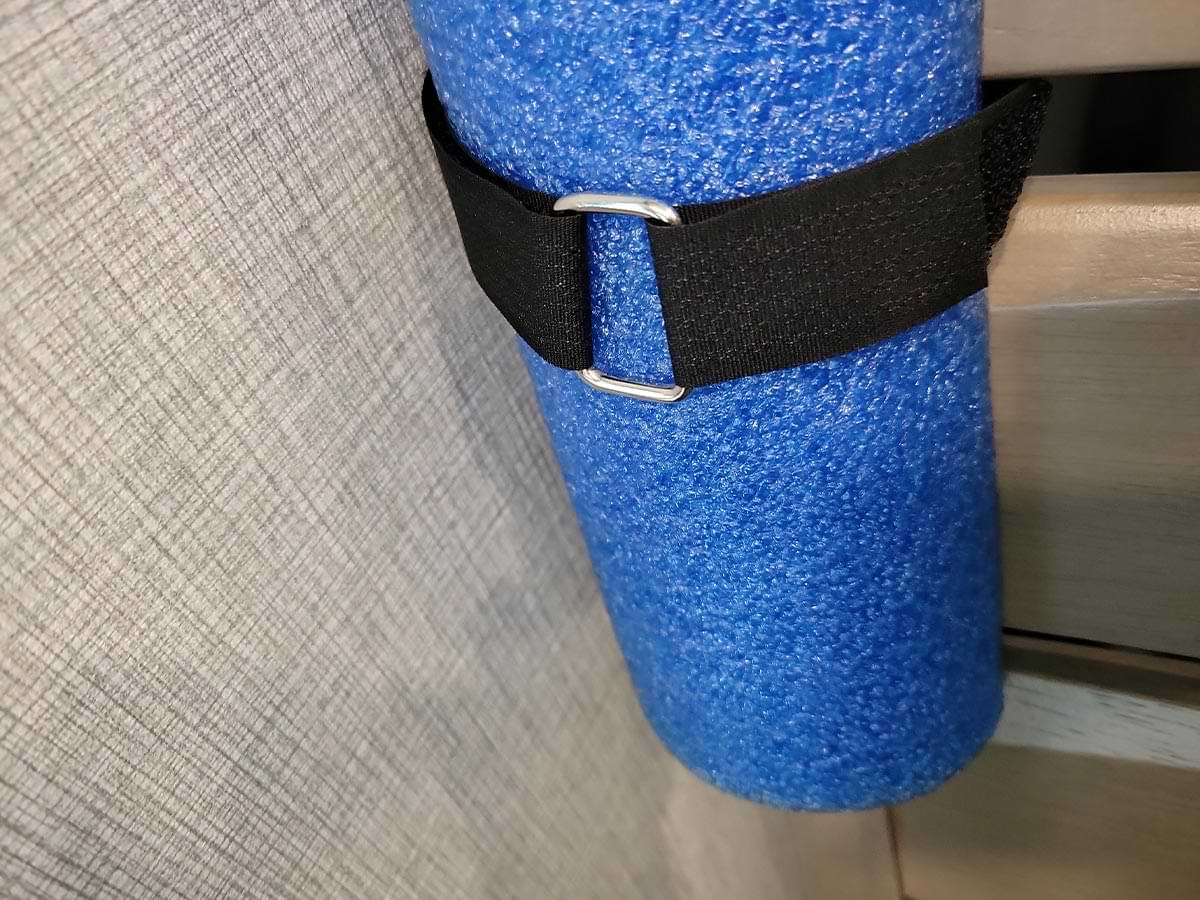
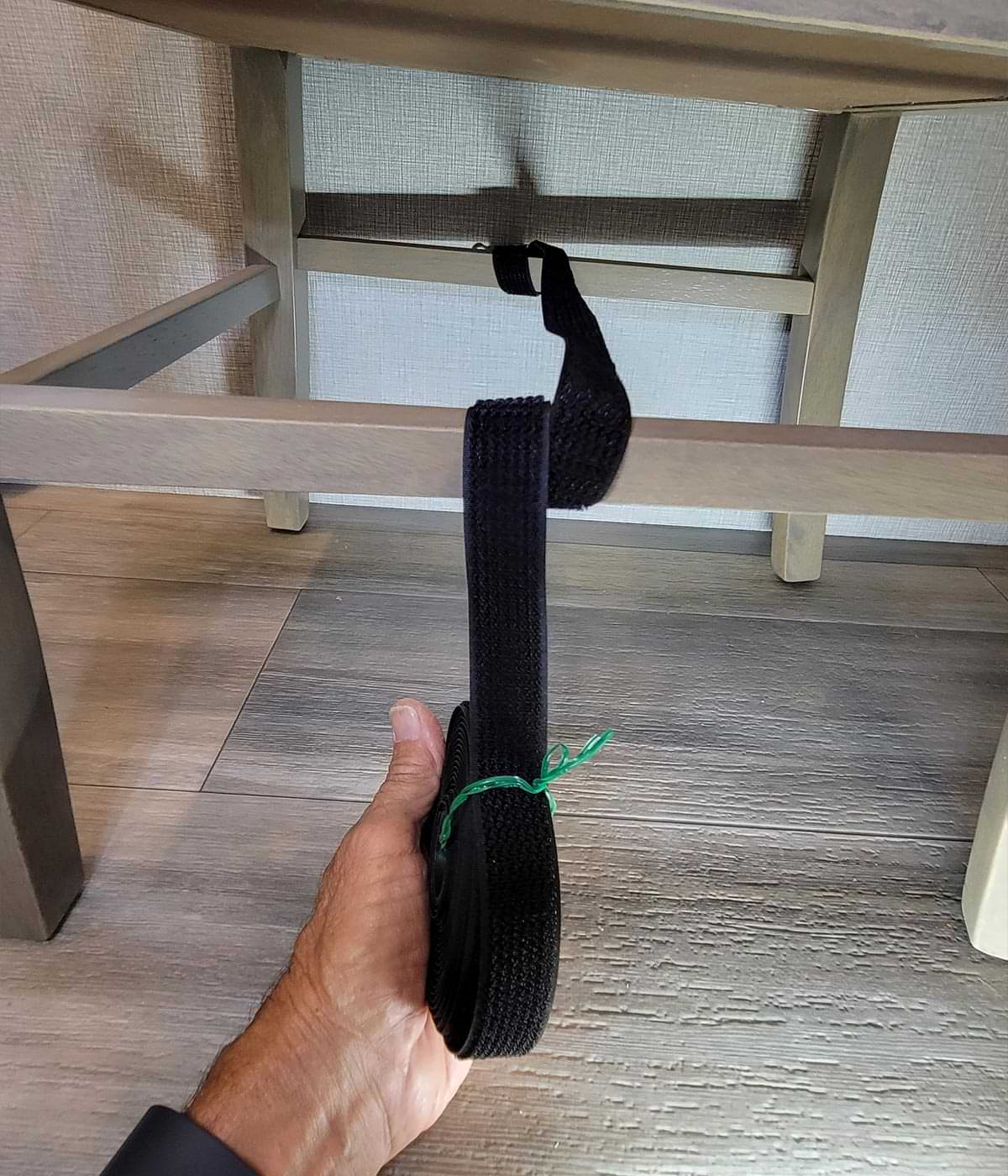
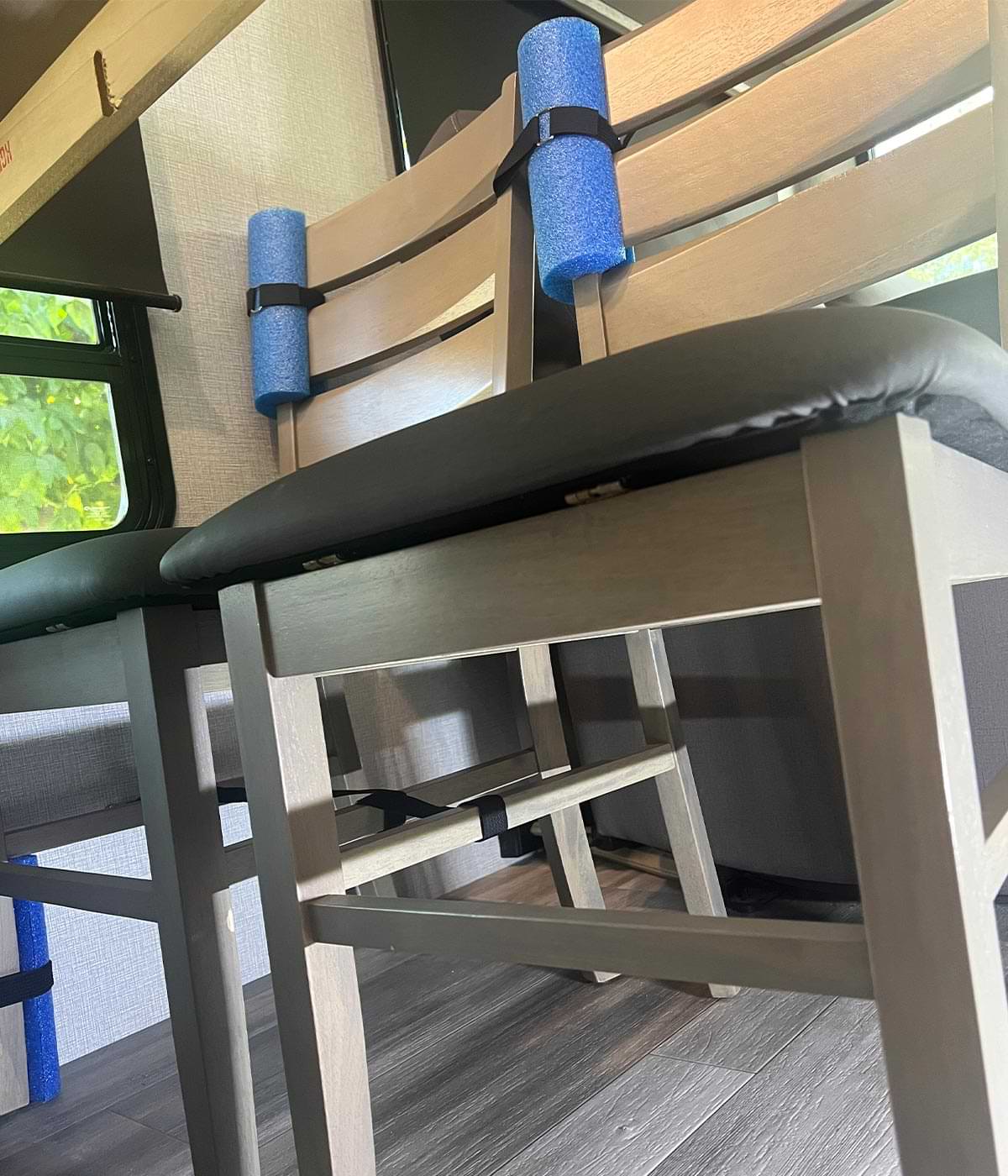
Satisfied that the chairs were firmly in place, I looked at other uses for the long length of leftover strapping material and rings. I cut various lengths of the hook-and-loop strap and used the pieces to secure the aforementioned electrical cords, hoses and yoga mat. To my surprise, the holding power of the strap was better than expected — and when it held the heavy 50-amp power cord without opening, I was sold.
Already a Subscriber? Click here for Access to the Full Issues.


